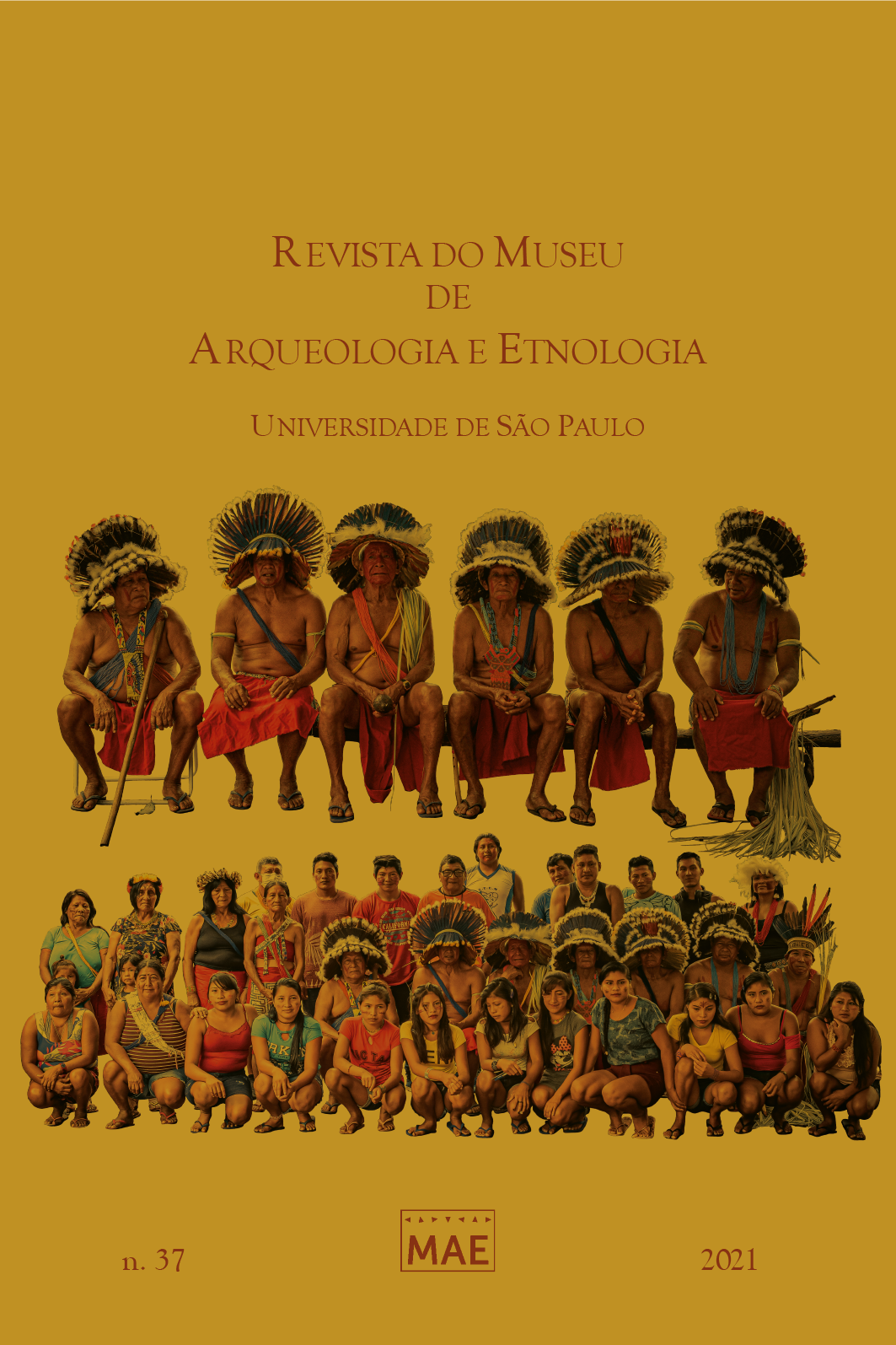Contribuição para a compreensão da religião e variações da cultura material dos índios Kashuiéna
DOI:
https://doi.org/10.11606/issn.2448-1750.revmae.2021.182695Palavras-chave:
Katxuyana, cultura material, xamanismo, Guianas, indumentária, Rio CachorroResumo
Escrito em homenagem póstuma ao antigo diretor do Museu Goeldi (Walter Albergo Eglers), nesse texto Polykrates apresenta informações gerais não apenas sobre os índios então nominados como Kashuiéna, mas também traça um panorama dos demais povos e sua distribuição pelo interflúvio Trombetas-Mapuera-Nhamundá e fronteira com a então Guiana Inglesa. Em seguida descreve aspectos da vida ritual dos Kashuiéna, com base nas informações obtidas em suas estadias na região, diretamente com piases (pajés) desse grupo, e também discorre brevemente sobre alguns itens da cultura material e vestimentas (antigas e então em uso), de homens e mulheres, com ênfase nos estojos penianos masculinos e saias femininas (de fibras e de miçangas).
Downloads
Referências
Frikel, P. 1957. Zur linguistisch-ethnologischen Gliederung der Indianerstämme von Nord-Pará (Brasilien) und den anliegenden Gebieten. Anthropos Bd. 52, H. 3./4. 509-563.
Haekel, Josef. 1958. Purá und Hochgott. Archiv für Völkerkunde, XIII, Wien, 25-50.
Nimuendajú, C. 1924. Os índios Parintintin do rio Madeira. In: Journal de la Societé des Americanistes. Tome 16, 201-278.
Nimuendajú, C. 1948. The “Parintintin” between the upper Tapajóz and Sao Manoel Rivers. In: Steward, J. H. (ed.). Handbook of South American Indians, Washington, v. 3, p. 295.
Kruse, A. 1955. Purá, das höchste wesen der Arikéna. Antropos, v. 50, fasc. 1-3, Switzerland, 404-416.
Polykrates, G. 1957. Ein besuch bei Indianern am Rio Trombetas. Ethnos, v. 22, 3-4, Stockholm.
Polykrates, G. 1961. Beiträge zur: Antropologie, Ethnografie und Sprachforschung der Kashuiéna Indianer sowie akkulturationserscheinungen. Ethnos, v. 26, 1-2, Stockholm.
Roth, Walter Edmund. 1924. An introductory Study of lhe Arts, Crafts, and Customs of the Guiana Indians. Thirty-eighth Annual Report of the Bureau of American Ethnology. 1916-17. Washington, 5-74.
Downloads
Publicado
Edição
Seção
Licença
Copyright (c) 2021 Gottfried Polykrates; Sayuri Arakawa

Este trabalho está licenciado sob uma licença Creative Commons Attribution-NonCommercial-NoDerivatives 4.0 International License.


















